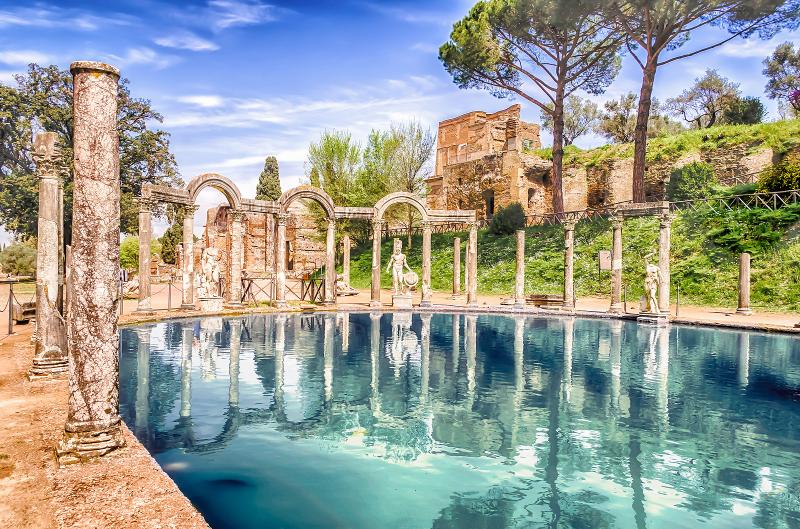Wonders of Italy: Hadrian’s Villa in Tivoli
ITA:

Use player to listen to Italian version

Paywall Content
The large villa complex known as Hadrian’s Villa was built by Roman emperor Hadrian starting in 117 AD, when Rome was at the height of its power. It has attracted the interest of the wealthy and powerful, and inspired artists, since the 1400s, after Pope Pius II Piccolomini, a fervent patron of the arts, visited the ruins of the villa.
The interest in this magnificent architectural complex was not always just aesthetic, but sometimes rather predatory as some popes and cardinals financed excavations of the site with the aim to take away precious marbles and statues for their own collections.
Influential architects, including Antonio da Sangallo and Francesco Borromini, visited the villa complex throughout the centuries to study classicism, which would inspire new and monumental works of art by generations of artists.
This is one of the reasons why Unesco inscribed Hadrian’s Villa in its World Heritage list, to highlight the site’s role in uncovering elements of classical architecture, especially during the Renaissance and Baroque eras. Unesco also cites it as an exceptional survival record of the early Roman Empire.
The ruins of Hadrian’s Villa lie on the foothills of the Tiburtine mountains, about 30 km outside Rome in Tivoli. Hadrian chose this location because it was rich in waters, being a junction for the passage of four Roman aqueducts. This allowed the emperor to design a series of idyllic spots, with pools, thermal baths and fountains. One such idyllic spot is the Canopus, a pool representing a branch of the Nile, once decorated with statues and columns leading to a temple; it was used for summer banquets and nighttime parties (just imagine!).
This and other architectures were inspired by some of the most famous buildings scattered through the Empire, in particular from Greece and Egypt.
Centuries of looting caused the villa, which at the time of Hadrian occupied an area larger than the city of Pompeii, to lose many of its precious art and artifacts. New discoveries luckily continue as archeologists found, early this year, Hadrian’s breakfast room, where he dined before servants on a marble throne.
Il grande complesso noto come Villa Adriana fu costruito dall'imperatore romano Adriano a partire dal 117 d.C., quando Roma era all'apice della sua potenza. La villa ha attratto l’interesse di ricchi e potenti, e ispirato innumerevoli artisti, sin dal 1400, dopo che Papa Pio II Piccolomini, un fervido mecenate, ebbe visitato le rovine della villa.
L'interesse per questo magnifico complesso architettonico non è sempre stato solo estetico, ma a volte invece predatorio, in quanto alcun











